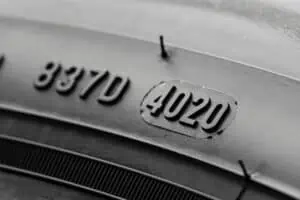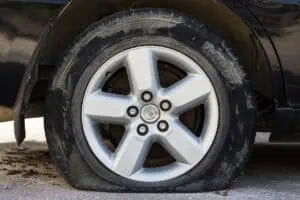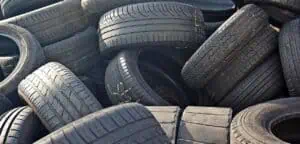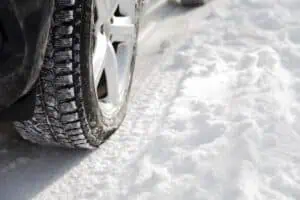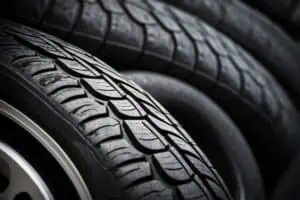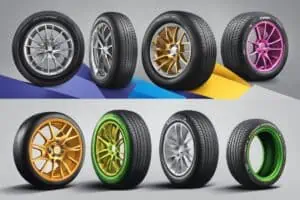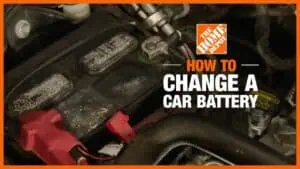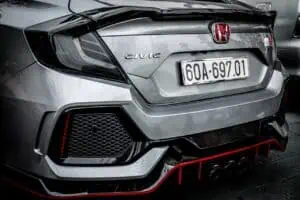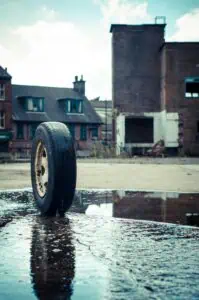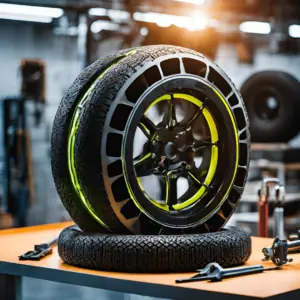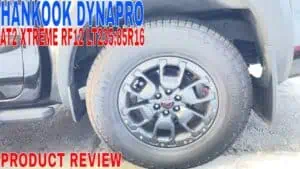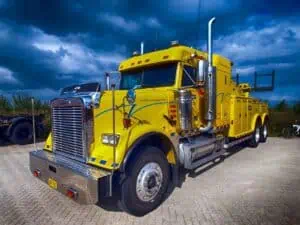When it comes to your vehicle’s performance and safety, few things are as crucial yet often overlooked as tire tread patterns. We’ll take a second look into the world of tire treads, exploring everything from what makes a healthy tread to how different patterns affect your drive in various conditions. Knowing this will change the way you look at those rubber rings keeping you connected to the road.
Understanding Tire Tread: The Basics
Before we get into the nitty-gritty, let’s start with the basics. Tire tread is the part of the tire that makes contact with the road. It’s not just there to look cool (although some designs do look pretty slick); it’s engineered to provide grip, channel water, and ensure your safety in various driving conditions.
What Constitutes Healthy Tread?
Healthy tire tread is like a good pair of hiking boots for your car. Here’s what we look for:
- Depth: New tires typically have a tread depth of about 10/32 to 11/32 of an inch. Anything less than 2/32 of an inch, and you’re in the danger zone.
- Even Wear: The tread should wear evenly across the tire. Uneven wear can indicate alignment issues or improper inflation.
- No Visible Damage: Cuts, bulges, or exposed cords are red flags that scream “Replace me!”
- Good Rubber Quality: The rubber should be pliable, not dry or cracked.
In our experience, maintaining healthy tread isn’t just about safety; it’s about getting the most bang for your buck. A well-maintained tire can last significantly longer, saving you money in the long run.
The Significance of Unique Tread Designs
Now, let’s talk about why tire manufacturers don’t just slap the same tread on every tire and call it a day. Tread designs are like fingerprints for tires – each one is unique and serves a specific purpose.
Key Elements of Tread Design
- Grooves: These are the deep channels that run around and across the tire. They’re crucial for water evacuation and play a big role in preventing hydroplaning.
- Sipes: These are the small slits in the tread blocks. They create biting edges that improve traction, especially on wet or icy surfaces.
- Tread Blocks: The chunky parts of the tread pattern. Larger blocks generally provide better dry handling, while smaller blocks can improve wet and winter performance.
- Shoulder Design: The outer edges of the tread pattern affect cornering and stability.
We’ve seen firsthand how these elements work together to create a tire’s personality. For instance, the Hercules Roadtour Connect AS, with its intricately placed tread blocks and four wide longitudinal grooves, is a champ at handling wet conditions. It’s like watching a master chef combine ingredients – each element has its role in creating the perfect dish, or in this case, the perfect ride.
How Different Tread Patterns Affect Vehicle Performance
Let’s break down how tread patterns affect your ride in different conditions. Trust me, choosing the right tread for your driving needs can be a game-changer.
Summer Performance
When the sun’s out and the roads are dry, here’s what we look for in a summer tire:
- Large, solid tread blocks: These provide maximum contact with the road, enhancing grip and handling.
- Minimal siping: Less water dispersion is needed, so the focus is on dry performance.
- Rigid tread pattern: This improves responsiveness and cornering stability.
Summer tires, like high-performance models, often have a softer rubber compound. This gives them incredible grip but also means they wear out faster – usually around 25,000 to 30,000 miles in our experience.
Winter Warriors
Winter driving is a whole different ball game. Here’s what makes a winter tire stand out:
- Deep, aggressive tread patterns: These bite into snow and slush.
- Plenty of siping: More biting edges mean better traction on ice.
- Flexible rubber compounds: These stay pliable in cold temperatures for better grip.
Take the Hercules Avalanche RT, for example. It’s engineered to handle extreme winter conditions with confidence, thanks to its advanced tread design and biting edges.
Rainy Day Performers
When it comes to wet weather, water evacuation is the name of the game:
- Wide, deep grooves: These channel water away from the tire’s contact patch.
- Specialized tread compounds: These maintain grip on slippery surfaces.
- Strategically placed sipes: These create additional biting edges for wet traction.
The Hercules Roadtour Connect AS is a prime example of a tire that excels in wet conditions. Its four wide longitudinal grooves are like miniature rivers, whisking water away and keeping you firmly planted on the road.
All-Season Versatility
All-season tires are the Swiss Army knives of the tire world. They’re designed to provide acceptable performance in a variety of conditions:
- Balanced tread patterns: These offer a mix of summer and winter characteristics.
- Moderate siping: Enough for light winter duty, but not so much that dry performance suffers.
- Durable compounds: These are engineered to perform in a wide temperature range.
In our testing, we’ve found that all-season tires like the Hercules Terra Trac Cross-V AW can handle a variety of weather conditions without requiring seasonal changes. It’s like having a tire that’s ready for whatever Mother Nature throws your way.
Assessing Tire Tread Wear
Knowing when your tires are past their prime is crucial for safety. Here’s how we check for wear:
The Penny Test
This classic test is simple but effective:
- Insert a penny into the tread groove with Lincoln’s head upside down and facing you.
- If you can see all of Lincoln’s head, your tread depth is less than 2/32 inch and it’s time to replace your tire.
Tread Wear Indicators
Many modern tires have built-in tread wear indicators:
- These are raised bars in the grooves that become flush with the tread when it’s worn down to 2/32 inch.
- When you see these, it’s time to start shopping for new tires.
Uneven Wear Patterns
Keep an eye out for these telltale signs of problems:
- Center wear: Often indicates overinflation.
- Outer edge wear: Usually means underinflation.
- Cupping or scalloped edges: Could point to suspension issues.
In our experience, regular tire rotations (every 5,000 to 8,000 miles) can help ensure even wear and extend the life of your tires.
The Dangers of Using the Wrong Tread Type
Using tires with the wrong tread pattern for the conditions isn’t just suboptimal – it can be downright dangerous. Here’s what we’ve observed:
Summer Tires in Winter
This is like wearing flip-flops in a snowstorm:
- Summer tires harden in cold temperatures, losing grip.
- They lack the siping needed for traction on snow and ice.
- Braking distances increase dramatically, raising the risk of accidents.
Winter Tires in Summer
It’s not much better the other way around:
- Winter tires wear quickly in warm temperatures.
- Their softer compounds can lead to poor handling and increased stopping distances on dry roads.
- You’ll burn through expensive winter tires unnecessarily.
All-Season Tires in Extreme Conditions
While versatile, all-season tires have their limits:
- They may not provide adequate traction in deep snow or on ice.
- Performance in extreme heat can be compromised compared to dedicated summer tires.
Our take? If you live in an area with distinct seasons, having two sets of tires (summer and winter) is often the safest bet. It’s an investment in your safety and can actually save you money in the long run by extending the life of both sets.
What to Look For (And Avoid) in Used Tires
Sometimes, budget constraints might lead you to consider used tires. If you go this route, here’s what to keep an eye out for:
Green Lights:
- Even tread wear across the tire
- Tread depth of at least 5/32 inch for all-season or summer tires, 6/32 inch for winter tires
- No visible damage, cuts, or bulges
- Manufacturing date within the last 6 years
Red Flags:
- Uneven wear patterns
- Visible cord or steel belts
- Signs of patching or repair
- Dry rot or cracking in the rubber
- Manufacturing date older than 6 years
Remember, while used tires might save you money upfront, they can cost you in safety and performance. In our experience, it’s often better to invest in new tires if you can swing it.
Treading the Path to Safety and Performance
Understanding tire tread patterns isn’t just for gearheads – it’s essential knowledge for anyone who gets behind the wheel. The right tread can be the difference between a confident drive and a nerve-wracking experience, especially when conditions are less than ideal.
From our extensive testing and real-world experience, we can’t stress enough how important it is to choose the right tire for your specific needs. Consider your local climate, driving habits, and vehicle type when selecting tires. And remember, even the best tires need proper maintenance to perform their best.
Regular checks, proper inflation, and timely rotations can extend the life of your tires and keep you safer on the road. And when it’s time to replace, don’t skimp – your tires are the only part of your vehicle in constant contact with the road. They’re an investment in your safety and driving enjoyment.
So next time you’re out for a drive, take a moment to appreciate those carefully engineered tread patterns keeping you connected to the road. They’re doing a lot more than you might think!
Sources:
https://www.herculestire.com/the-tread/why-tire-tread-patterns-impact-driving-performance
